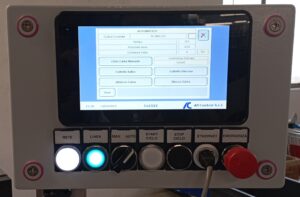A choice not always easy to make.
Do you need to choose a geared motor for your specific project or application? Here are some pointers for choosing the right geared motor. It is not always simple. On the contrary, it can be quite a complex choice depending on the complexity of the project/use to be made. It requires a range of information without which it is difficult to identify the right solution. Several parameters must be clear in order to orientate oneself in the choice of both the gearmotor and the individual gearbox and motor. In this short article, we intend to provide you with some indications that we hope will be useful to you.
Gearmotors: endless uses, thousands of models to choose from.
Geared motors have truly endless application possibilities. Everything that moves, from industrial to home automation, may need an operating mechanism such as that generated by a geared motor. That is why it can be complex to untangle this jungle. There are thousands of models available to choose from, each with multiple combinations that need to be categorised.
Gearmotors are created by assembling an electric motor to a gearbox. This solution in its various versions can be adapted to specific uses requiring low speed and high torque due to the fact that gearbox and motor work together. In fact, gearmotors optimally couple electric motor and gearbox, achieving energy efficiency and extending the life of the devices on which they are installed.
First of all, it is necessary to know the type of application of the geared motor. Whether it is to operate on a continuous cycle or only for a short time during the day. Then you need to know the load classes and hours of operation.
It is then necessary to be clear about the type of power supply and whether it is direct or alternating current. Then we move on to voltage, maximum current and frequency.
The main types of geared motors.
There are various types of geared motors, e.g. parallel, angular or planetary axes. The size and orientation of the mounting play a key role and determine the orientation towards certain models to the detriment of others. It is also necessary to know whether there is a desired noise level or whether it is an irrelevant parameter and the shock load.
Depending on the type of application, it is necessary to check the degree of protection or the need to work at particularly high temperatures.
Some information you need to know in order to choose the right gearmotor.
In order for the geared motor to be effective for its intended application, it is necessary to know the RPM and the starting and operating torque. The output RPM can be traced from the machine, while the starting and operating torque needs to be known. Then the output torque at full load and the output speed must be verified. The gearmotor must be mounted on a suitable motor according to torque and power, selecting from the various types on the market (magnet, induction or brushless motor) . The reduction ratio can be chosen according to the speed on the gearbox axis or according to the power output on the motor axis.
Final test.

Once the most suitable model has been selected, it is necessary to move on to the stress test phase. This phase is crucial and should not be done hastily. In this phase you can check whether the motor overheats or not, you can test the noise it emits and whether it withstands the stress to which it is subjected.
At Automec, we have been supporting our customers in choosing the right gearmotor for their needs since 1989. Often it is just a matter of replacement. Other times, however, they contact us for the development of ad hoc projects that require upstream advice and a feasibility check. This is where our experience comes into play in advising our customers on the choice of the right gearmotor or worm gear for their needs. Once a suitable model has been identified, we take care of the sampling phase and test together with our customers the actual functioning of the sample for their specific requirement. At the end of the test, after any modifications have been made, we can start production of the gearmotor or worm gear.



